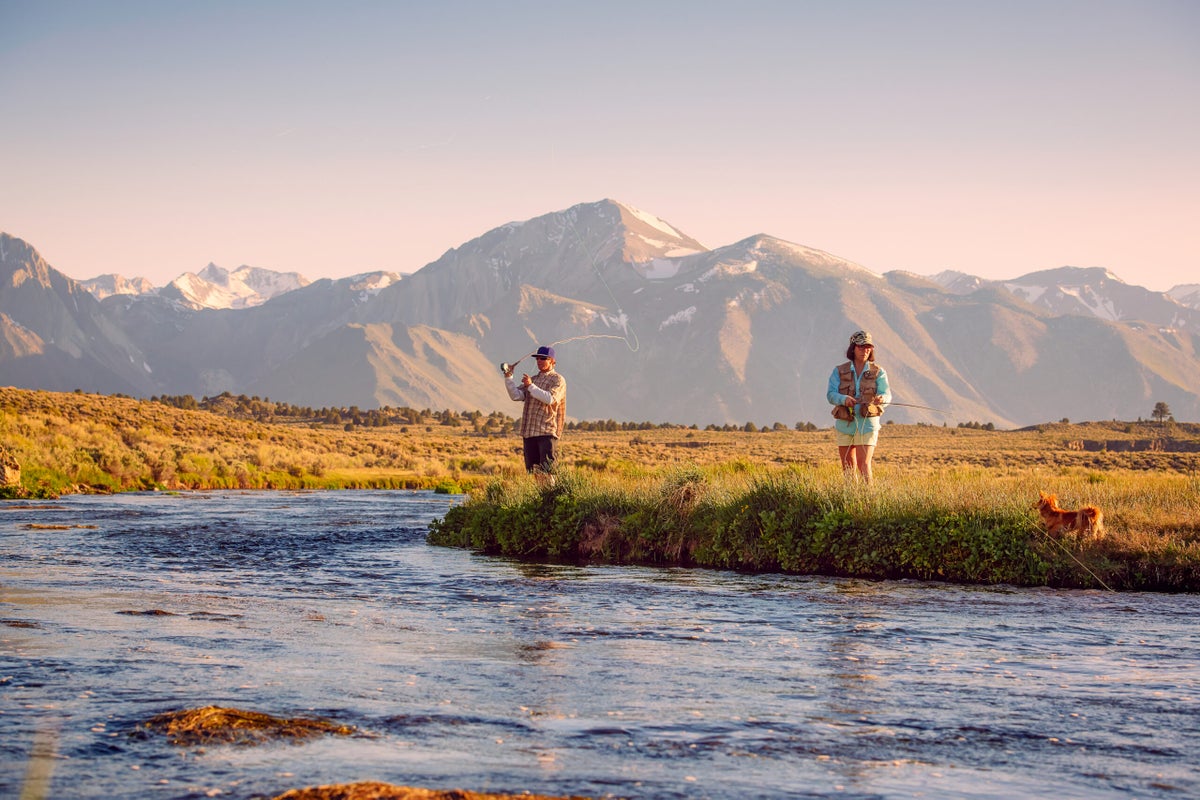No products in the cart.
Outdoor Adventure
Everything You Need to Know to Start Fly Fishing
There’s a lot to love about fly-fishing. The soothing sound of the rushing river. The wildlife, both in and around the river. Spending time outside with friends and family. And, of course, the actual fishing. From getting the right gear and mastering the technique to learning how to read the river and understanding what the fish are doing, there’s a lot to learn. And while the learning curve can be steep, it’s worth the time and effort. There’s an artistry to the activity that is truly sublime, and not only does the joy of landing a fish never get old, it just might become an obsession. Best to think of fly fishing as a journey that will take you to really cool places and reward you in surprising ways. Here’s how to get started.
Where To Go
Fly rods can be used to catch almost any species of fish swimming around America, from your backyard pond to the rolling waves of the ocean to the tops of the Rocky Mountains. Fish, especially species like trout, smallmouth bass and tarpon, tend to live in beautiful places. Anytime you go fly fishing the beauty of the natural surroundings should be a big part of the appeal.
Trout are the species most heavily associated with fly fishing and they like cold mountain streams and lakes. Bass, carp and sunfish can be found in warmer lakes, reservoirs and rivers all over the country. Saltwater fly fishing continues to gain popularity, especially for species like salmon and striped bass in colder waters, and bonefish or permit in more tropical spots.
What To Bring
When it comes to fly rods (and tackle) there are so many options that walking into a good fly shop can feel a little overwhelming if you don’t know what you’re looking for. While gear can be as simple or complex as you’d like, you really only need a handful of items to get started.
A fly rod: A 9-foot rod in a weight of #5 to #8 will work for just about any type of fly fishing, outside of deep sea searches for swordfish. There are lots of great American companies making fly rods, but rods can break fairly easily, especially when you’re first learning the ropes, so it’s worth spending the extra money to get a rod that is warrantied for at least 25 years.
Reel and Fly Line: Fly rods come with recommended reel sizes, the smaller the reel, the lighter the line weight. The reel is connected with a backing tied to the colorful fly line, which is most often designed to float. A clear leader attaches the line to the fly. Leaders for species such as trout are in lower weight sizes like 4x or 5x, while larger species like steelhead or stripers may require larger sizes like 1x or 2x.
Flies: Even though all lures in the fly fishing world are called “flies” they often don’t look anything like a fly. There are essentially two types: dry and wet. Dry flies float on the surface of the water and can resemble everything from aquatic insects like mayflies to terrestrial insects like grasshoppers, and even mice and frogs in some unique locales. Wet flies cover everything from streamers, or “Wooly Buggers” resembling baitfish, to aquatic insects in their nymph stages, to artificial worms and trout eggs. Choice of fly will depend on your destination and what you’re looking to catch, but you should note that fly sizes run backwards, the lower the number (from 2-28), the larger the fly.
Net, Waders and More: After a rod, reel, line and flies you really don’t need much else. A net is a good idea as catch-and-release fishing is required in most popular fly fishing destinations. Basic gear like nippers, forceps to pinch barbs or remove hooks, tippet to attach new flies to the leader, and some good wading or water shoes are good to have. If you’re setting out for colder waters, waders are helpful.
A Good Cooler: The length of your mission and whether you’re wading in the river or on a boat will dictate what size you should bring. A small, soft-sided model you can sling over your shoulder works great for shorter trips—or if you have to walk a ways to get to the river. Regardless, pack it with plenty of ice and at least a few Bell’s Two Hearted IPAs. As the beers get consumed there’ll be more room for your catch.
Since 1985, Michigan-based Bell’s Brewery has brewed beers inspired by nature, the arts and classic brewing traditions. Pioneers continuously innovating IPAs, stouts and hazy ales, Bell’s focuses on crafting beer that’s brewed responsibly and sustainably, as well as making craft beer a community that’s open to all.
Source link

